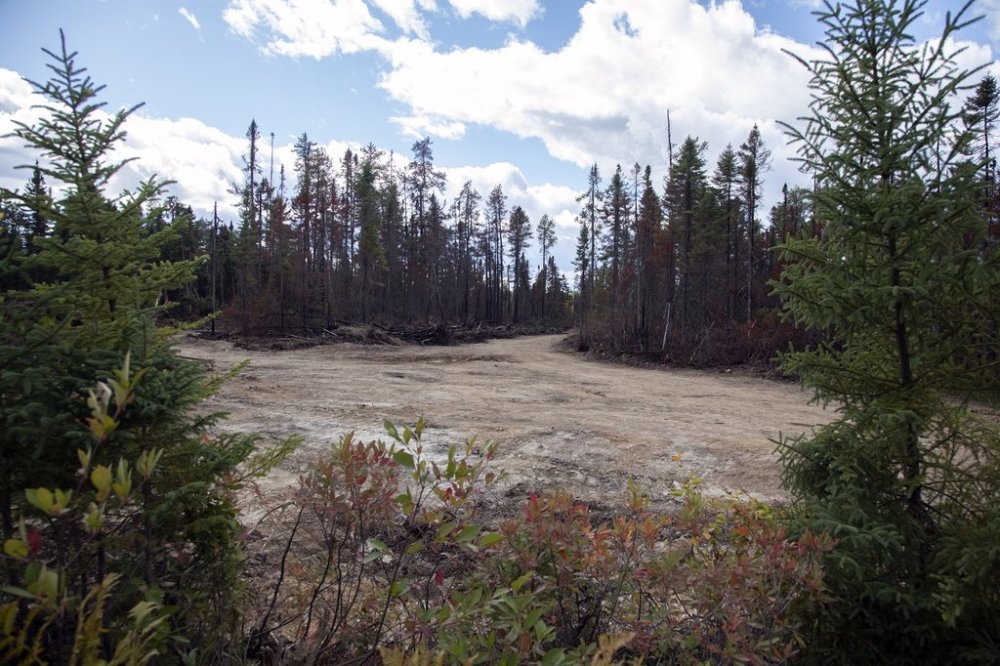Blackened trees and silence at site of New Brunswick’s largest summer wildfire
Advertisement
Read this article for free:
or
Already have an account? Log in here »
To continue reading, please subscribe:
Monthly Digital Subscription
$1 per week for 24 weeks*
- Enjoy unlimited reading on winnipegfreepress.com
- Read the E-Edition, our digital replica newspaper
- Access News Break, our award-winning app
- Play interactive puzzles
*Billed as $4.00 plus GST every four weeks. After 24 weeks, price increases to the regular rate of $19.00 plus GST every four weeks. Offer available to new and qualified returning subscribers only. Cancel any time.
Monthly Digital Subscription
$4.75/week*
- Enjoy unlimited reading on winnipegfreepress.com
- Read the E-Edition, our digital replica newspaper
- Access News Break, our award-winning app
- Play interactive puzzles
*Billed as $19 plus GST every four weeks. Cancel any time.
To continue reading, please subscribe:
Add Winnipeg Free Press access to your Brandon Sun subscription for only
$1 for the first 4 weeks*
*$1 will be added to your next bill. After your 4 weeks access is complete your rate will increase by $0.00 a X percent off the regular rate.
Read unlimited articles for free today:
or
Already have an account? Log in here »
MIRAMICHI – A lone black crow atop a charred spruce tree was one of the only signs of animal life visible last week along a stretch of what used to be a lush green forest in the northern part of New Brunswick.
Now, the area is dotted with blackened trunks and strewn with ash from the Oilfield Road fire, which scorched more than 14 square kilometres of land near Miramichi, N.B., since it began in early August. The fire was brought under control on Sept. 2, and is being monitored.
Provincial forest rangers and firefighters guided reporters on a tour of the site to survey the damage. They explained how they deployed 125 people, four excavators, and 11 bulldozers, among other pieces of heavy machinery, to contain the fire on the ground as planes pummeled the flames from the skies with retardants and water.

“There was a lot of flame,” said Bob Amos, a forest ranger and firefighter with the Natural Resources Department. “It was dry, burning the trees, going up, torching the trees. Any time you tried to put it out and tried to get close, the right wind would just blow it across ahead of you …. Once it got up into the trees, it would just start rolling. And there was no way you could stop it.”
Firefighting crews set up trailers, tents, equipment, and food stations in an area on the edge of the flames, Amos said. Officials tried to ensure the crews had what they needed to make their job easier, he added.
Roger Collet, a forest ranger with New Brunswick’s Natural Resource Department, said that with temperatures hovering around 40 C, the firefighters — dressed in thick, flame-retardant yellow shirts — were asked to drink about half a litre of water every 20 minutes to keep from getting dehydrated.
“The fire behaviour was too extreme, the heat was too much,” Amos said.
“The wind would be going one way and it would swirl, and it would come back on you, and you got a bunch of embers all over you. And it’ll catch behind you, and sometimes you just have to haul out …. It would be sitting quiet for a while, and you get 10- to 15-kilometre winds.”
Wildfires like the Oilfield Road blaze ravaged large parts of Canada over the summer. They destroyed ecosystems and sent smoky air thousands of kilometres away, damaging air quality in major cities.
While wildfires can be started by humans or natural causes such as lightning, the Canadian Climate Institute said they are becoming “bigger, hotter and more frequent” because of accelerating global heating. The institute also cites recent federal government research that shows the fire season is starting earlier, lasting longer and becoming harder to contain.
Officials also invited reporters to tour a ranger office in Miramichi — what they called a “nerve centre” equipped with computers, desks and maps — where they co-ordinated their response to the wildfires.
Weeks after their deployment, the smell of burned wood lingered in the silent air. There were no sounds of chirping crickets nor birdsong.
“Well, no birds are back here, yet,” Amos said. “They probably took off … They won’t come back for a while.”
This report by The Canadian Press was first published Sept. 23, 2025.

